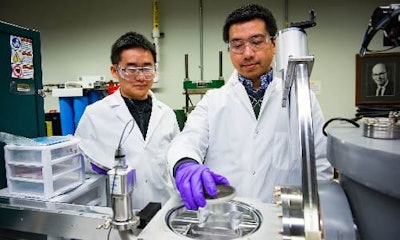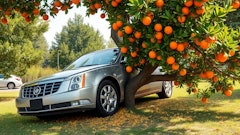
Sichuang Xue (left) Purdue postdoctoral research associate and Qiang Li (right), Purdue doctoral student preparing a sample to create super-strong aluminum alloys (image courtesy of Purdue).
February 20, 2018
By CRM Staff
West Lafayette, Indiana — February 20, 2018 — New research from Purdue University has found that the microstructure of aluminum can be manipulated in order to increase its strength and ductility. The improved aluminum showed strength equivalent to stainless steel.
Xinghang Zhang, professor of materials engineering at Purdue said, according to our partner publication Repairer Driven News, “Most lightweight aluminum alloys are soft and have inherently low mechanical strength, which hinders more widespread industrial application. However, high-strength, lightweight aluminum alloys with strength comparable to stainless steels would revolutionize the automobile and aerospace industries.”
The new aluminum is scratch-resistant as well as strong, thus indicating possible structural and nonstructural automotive applications. “The coatings are very, very hard,” Zhang said.
According to Repairer Driven News, an interview with Zhang revealed that the researchers had not yet tested the tensile strength of the new aluminum. “We hope tensile strength will also be high,” he said. With new aluminum closures already becoming sought after, this improved aluminum could greatly increase their desirability for OEMs.
The research team at Purdue discovered “how to fabricate aluminum alloys that are comparable to, or even stronger than, stainless steels,” Zhang said in Purdue’s report. “There is a lot of potential commercial impact in this finding.”
Using a laser-induced projectile testing technique, researchers at Rice University were able to produce a thin aluminum film at 600 metres per second. For manufacturers this process could mean reduced production costs. “Say I want to screen many materials within a short time,” Zhang is quoted as saying by Purdue. “This method allows us to do that at far lower cost than otherwise possible.”
Purdue also suggested that one potential use for the new alloys might be “wear and corrosion resistant aluminum alloy coatings for the electronics and automobile industries.”
For more information, visit purdue.edu.























